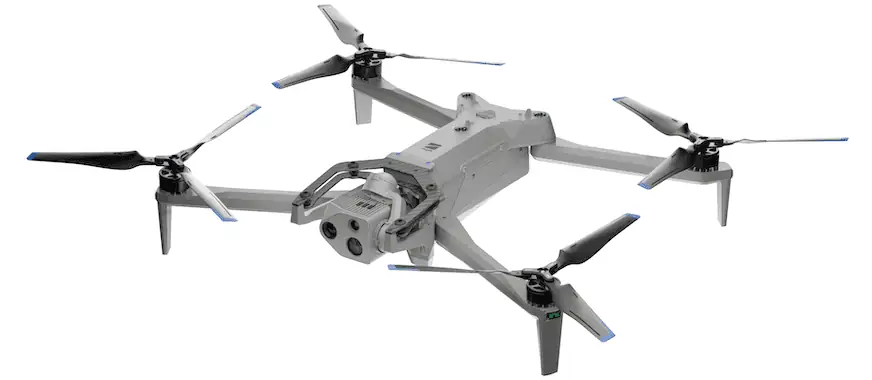
X10D small drone is on DIU’s Blue UAS Cleared List. (Photo: Skydio)
The Defense Innovation Unit (DIU) lacks the resources to adequately assess commercial unmanned aircraft system (UAS) vendors and their wares at scale, limiting the Defense Department’s access to the rapidly innovating domestic drone industry and forcing government buyers into more costly options, an industry official said on Tuesday.
A related effort in the private sector to clear UAS for use by federal civilian and state agencies also suffers from scant resources, leaving them short of options and facing higher costs, Mike Ledbetter, chief operating officer at Huntsville, Ala.-based drone manufacturer COLSA Corp., told the House Homeland Security Committee.
During the latest once-a-year assessment conducted by the DIU to refresh the Blue UAS Cleared List, there were 369 submissions that participated, resulting in acceptance of 23 drone platforms and 14 components, Ledbetter said, equating the relatively light results to limited resources.
“These rates do not match the pace that American drone manufacturers are producing new systems or developing advanced technologies that could support emergency management or border security use cases,” he told the committee, which examined the use of UAS by the Department of Homeland Security. “The impact is that federal and state agencies who had previously invested in fleets of UAS is manufactured in restricted nations now have very few and increasingly expensive options for bringing their UAS operations into compliance.”
The commercial drone manufacturing market is dominated by China, particularly the Chinese firm DJI. To expand access to non-adversarial drones, DIU hosts the annual Blue UAS Challenge to update its list of cleared drones that meet supply chain and cybersecurity requirements.
DIU in February announced the latest list of new manufacturers, their drones, and related components, that are nearing Blue UAS approval. COLSA did not make the list.
A separate assessment effort conducted by the Association of Uncrewed Vehicle Systems International, called the Green UAS program, to address non-DoD needs has resulted in only seven platforms being cleared, Ledbetter said in his written statement for the committee.
“A company of our size with a successful track record in federal contracts makes the support to these agencies low risk,” he wrote. “However, there is a challenging process to be evaluated and certified for sales to either defense or civil agencies.”
Ledbetter pointed out that COLSA has built and delivered more than 1,400 drones to the U.S. Army, developed software that enables swarms of drones to operate, and has developed a line of commercially available UAS.